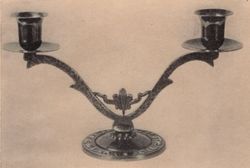There are two representations of tree, the tree of life and the tree of knowledge. Today science battles with the concept of divine creation. To study life and the spirit or to study nature and the mechanics of how things are made by ntr. There are teachers and writers about both schools of thought. Lets liken the learning obtained (degrees) to an apple on a tree, the fruit of the original author/designer/creator. The students are the common folks, like Adam and Eve. Today I am asking you what are the golden apples? Among the ancient text, what thought were they trying to convey by using metaphors such as bride, apples, and golden? And yet further, the names of these figures, what did they represent or personify? What "Lady" was stolen? And why did they travel to where the black men were, where the golden apples are found? I think that as we discover more about the history of the women scribes of Africa we will uncover much about human history that has been hidden in analogies.
The Shekhinah as the Sabbath Bride
Legendary mystic of the 16th century, Rabbi Isaac Luria. Here is a quotation from the beginning of his famous shabbat hymn:
"I sing in hymns
to enter the gates
of the Field
of holy apples.

"A new table
 we prepare for Her,
we prepare for Her,a lovely candelabrum
7 branched Candelabra
sheds its light upon us.
"Between right and left
the Bride approaches,
in holy jewels
and festive garments..."
A passage in the Zohar states, "one must receive the Lady with many lighted candles, many enjoyments, beautiful clothes, and a house embellished with many fine appointments".
It is from this culture that the term Shekinah, Shechinah, Shekina, Shechina arises after the consecration of the temple of Solomon. Perhaps a language expert could shed some light on how the etymology of שכן relates to S'sh3t. I would think that with the reference to Solomon, the temple, and building (divine architecture), the candelabra (light), Her, and apples mentioned, the passage is referring to Seshat, which is a title and not a name so it is well substituted among different cultures. Remember Seshat held the title also "Lady of the House of Books", and was commonly known as layer of the foundation of the temples, pyramids, and buildings. The Shabbat carries with it the symbolism and science of Seshat "symbolizing the Seventh Day in the Book of Genesis, after six days of creation. It is observed from sundown on Friday until the appearance of three stars in the sky on Saturday night. Shabbat is ushered in by lighting candles." according to one website.

An example of a bronze Shabbat candlestick
holder made in Israel in the 1940s.
#10 a lotus vial in gold, #121 in silver, #140 in colored stone (malachite?); #35, 75, 175 rim of lilies; #195, 75 as buds. #35-38 are candle sticks. #30-34 are hooks, spoons, and other implements used in the Temple, 2.Chronicles 4:16; Exodus 35:15. The usage of these is as candlesticks with lotus flower holders. Buds among flowers and almonds are also mentioned as decorative items, Exodus 37:17ff, and can be seen on item#195 and 75. (Go to `Galleria' for more illustrations.) 1.Kings 7:49.The preferred floral ornament was the shoshana, translated as "lily" (lotus). 1.Ki. 7:26.
This concept is getting pretty heavy as it is totally disruptive to some religious conclusions about script"ures" so I will move on to the Greeks and song or hymn to Demeter, see my blog about Demeter and black women goddess figures in Africa for further background on Demeter and her relationship to Seshat.
Callimachus, Hymn 6 to Demeter (trans. Mair) (Greek poet C3rd B.C.) : "[Ostensibly a hymn for the Thesmophoria festival of Athens:] As the Basket comes, greet it, ye women, saying ‘Demeter, greatly hail! Lady of much bounty, of many measures of corn.’ As the Basket comes, from the ground shall ye behold it, ye uninitiated, and gaze not from the roof or from aloft--child nor wife nor maid hath shed her hair [i.e. the locks were dedicated at puberty]--neither then nor when we spit from parched mouths fasting [i.e. the Nesteia, the second day of the Thesmophoria, a day of fasting]. Hesperos [the star Venus] from the clouds marks the time of its coming: Hesperos (the Evening Star), who alone persuaded Demeter to drink, what time she pursued the unknown tracks of her stolen daughter [Persephone]. Lady, how were thy feet able to carry thee unto the West, unto the Melanoi (Black Men) and where the golden apples are? Thou didst not drink nor dist thou eat during that time nor didst thou wash. Thrice didst thou cross Akheloios with his silver eddies, and as often didst thou pass over each of the ever-flowing rivers, and thrice didst thou seat thee on the ground beside the fountain Kallikhoros (Callichorus) [i.e. the well at Eleusis], parched and without drinking, and didst not eat nor wash.